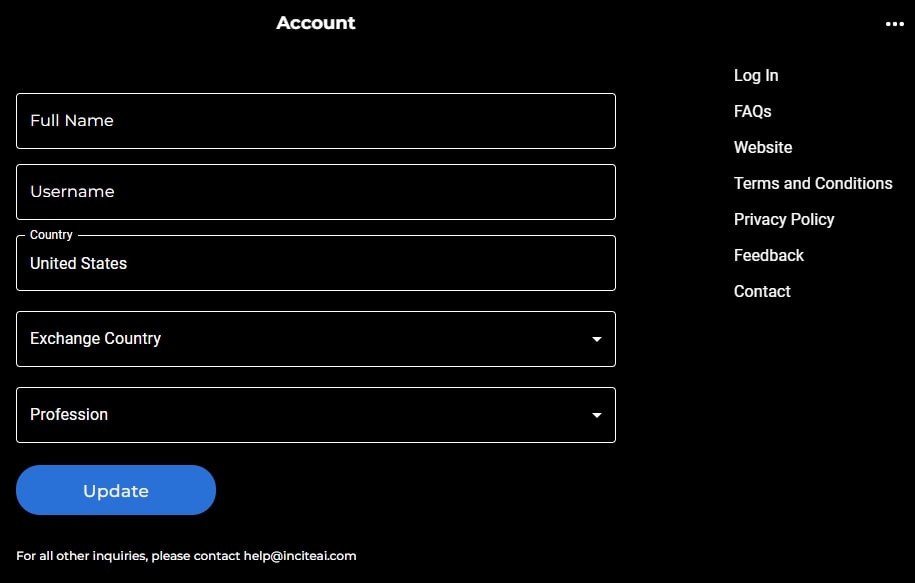20 Pro Reasons For Selecting AI Stock Investing Platform Websites
20 Pro Reasons For Selecting AI Stock Investing Platform Websites
Blog Article
Top 10 Tips To Assess The User Interface And Experience In Ai Platforms For Stock Prediction And Analysis.
The User Interfaces and User Experiences are key to the usability of AI stock-predicting/analyzing trading platform. An undesigned interface could make it difficult to make decisions, even if the underlying AI models are robust. Here are 10 top ways to evaluate the UX/UI.
1. Easy of use and intuitiveness are crucial factors to take into consideration.
Navigation: Make sure the platform is simple to navigate using clearly defined menus, buttons and workflows.
Learning curve: Determine the speed at which a novice user can comprehend and utilize the platform with no any extensive training.
Look for similar design styles (e.g. color schemes and buttons) across all platforms.
2. Make sure you check for customizability.
Dashboard customization: Check if users can personalize dashboards to display relevant information such as charts, metrics, and charts.
Layout flexibility - Make sure that the platform permits users to the ability to rearrange or resize widgets and charts.
Themes: Check whether your platform supports dark or light mode or other preferences.
3. Visualize Data
Quality of chart: Ensure that the platform has interactive charts with zooming and panning functions (e.g. line charts, candlestick charts, etc.).
Visual clarity: Verify that the data is clearly displayed, with correct labels toolstips, legends, etc.
Real-time Updates: See whether your graphs are updated with the latest market information.
4. Test Reponsiveness and Speed
Loading Times: Make sure that your platform loads quickly regardless of whether you are handling large datasets.
Performance in real time: Make sure the platform is able to handle data feeds immediately without lags or delays.
Cross-device compatible: Make sure the platform works seamlessly on all devices, including desktop, mobile and tablet.
5. Assess the accessibility
Look through the mobile application to determine if the app has all the features you need to trade on the go.
Keyboard shortcuts. Make sure that the platform has keyboard shortcuts for users who are skilled.
Accessibility features: Determine whether the platform is compliant with accessibility standards (e.g., screen reader support or high-contrast mode).
6. Utilize the Search and filter Functions
Search effectiveness: The platform should enable users to search quickly for stocks, indices and other assets.
Advanced filters - See whether you can apply filters, like by sector, market cap or performance metrics, to limit the results.
Saved searches - Make sure that the application allows you to save frequently-used filters or searches.
7. Look for Alerts, Notifications and other Information
Alerts that can be customized. Users can set alarms based on certain conditions (e.g. price thresholds or surges in volume).
Notification delivery: Ensure that notifications are delivered via multiple channels, e.g. SMS, emails, or in-app notifications.
Check the alerts' time-to-date and accuracy.
8. Assessment of Integration to Other Tools
Broker integration - Check that your platform seamlessly integrates with your brokerage to allow rapid trade execution.
API access: Find out whether the platform permits advanced users to develop customized tools and workflows.
Third-party Integrations: Verify that the platform is compatible with the other programs (e.g. Excel, Google Sheets and trading bots).
9. Examine Support and Help Features
Check the onboarding tutorials.
Help center - Ensure that your platform has a complete support center or knowledgebase.
Customer support: Check whether the platform has prompt customer service (e.g. live chat, email, telephone).
10. Test Overall User Experience
User feedback: Use reviews and testimonials from users to determine their overall satisfaction with the platform's UI/UX.
Trial period: Make use of a free demo or trial to evaluate the usability of the platform.
Error handling: Check how the platform handles edge cases or error (e.g. invalid inputs or downtime of servers).
Bonus Tips:
Aesthetics. While functional design is crucial, an appealing visual design can enhance user experience.
Performance under stress - test the platform's responsiveness and stability during markets with high volatility.
Find active forums and communities. Users are able to share their tips and feedback on these forums and communities.
These tips will help you evaluate the UI/UX of an AI stock-predicting/analyzing trading platform, making sure they are user friendly efficient, effective and compatible with your requirements for trading. The user interface and experience of a trading system can significantly impact the ability of you to make informed trades and make the right decisions. View the most popular ai stocks recommendations for website info including using ai to trade stocks, using ai to trade stocks, best ai trading app, ai investing app, ai investing platform, trading ai, ai chart analysis, investment ai, best ai stock, ai trade and more.
Top 10 Tips To Evaluate The Effectiveness Of Ai Platform For Analyzing And Predicting Trading Stocks
It is crucial to evaluate the capacity and performance of AI-driven trading and stock forecasting platforms. This will ensure that they are able to cope with the increasing volume of data in addition to market complexity and user demands. Here are 10 top tips for evaluating scalability.
1. Evaluate Data Handling Capacity
TIP: Find out if the platform can analyse and process large data sets (e.g., historic stock data, real-time market feeds, as well as alternative data like news or social media).
Why: Scalable platforms must manage increasing volumes of data without performance degradation.
2. Test the Real-Time Processing Capabilities
Tip: Check the ability of the platform to process live information streams, like live stock prices or breaking news stories.
Reason: Delays in trading decisions could lead to missed opportunities.
3. Examine Cloud Infrastructure for Elasticity
Tips - Find out if a platform uses cloud-based infrastructure, e.g. AWS or Google Cloud.
Why: Cloud platforms are flexible, and they can be scaled up or down according to demand.
4. Examine Algorithm Efficiency
Tip: Assess the efficacy of AI models that are employed to predict (e.g. Deep Learning and Reinforcement Learning).
Why? Complex algorithms may require a lot of resources. Optimizing them so that they make them scalable is important.
5. Investigate the parallel Processing and Distributed Computing
TIP: Find out if the platform supports distributed computing or parallel processing frameworks (e.g., Apache Spark, Hadoop).
What are they: These technologies facilitate faster data processing and analysis across many nodes.
Review API Integration & Interoperability
Tips: Make sure to check the integration of the platform to external APIs.
Why: Seamless integration ensures that the platform is adaptable to new information sources and environments for trading.
7. Analyze User Load Handling
Use a high-traffic simulation to see how the platform responds when under stress.
Why should scalable platforms provide the same performance regardless of how many users are there.
8. Examine the model of Retraining and its Adaptability
Tips - Check how frequently the AI model is trained and at what rate.
Why: Because markets are always changing, it is important to ensure that models are up-to-date.
9. Examine fault tolerance and redundancy
Tip - Make sure that your system has redundancy and failover mechanisms for dealing with hardware or software failures.
What's the reason? Downtime can be costly in trading, so the ability to tolerate faults is crucial to ensure scaling.
10. Monitor Cost Efficiency
Analyze your platform's cost that includes cloud resources, storage and computing power.
Why: Scalability should not result in an unsustainable price So balancing performance and expense is essential.
Bonus tip: Future-proofing
Be sure that the platform is able to be able to adapt to changes in regulation and incorporates emerging technologies like quantum computing, or even advanced NLP.
These factors will help you evaluate the impact of AI-based stock prediction systems and trading platforms. They'll also make sure that they are robust and efficient, ready for expansion, and are future-proof. See the top rated best stock prediction website hints for blog tips including chart ai trading, best ai penny stocks, trading ai tool, best stock prediction website, ai trading tool, ai stock prediction, ai tools for trading, can ai predict stock market, free ai tool for stock market india, stock trading ai and more.